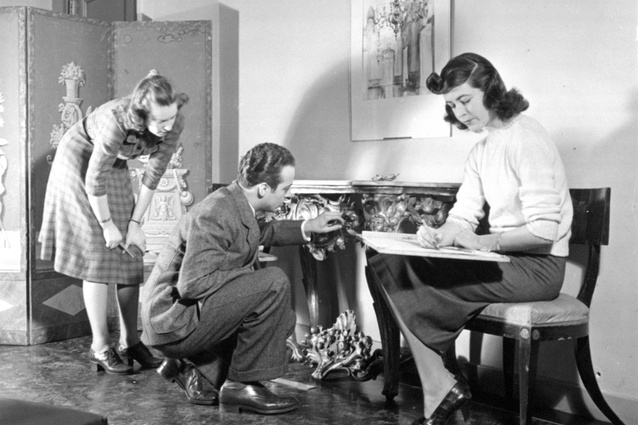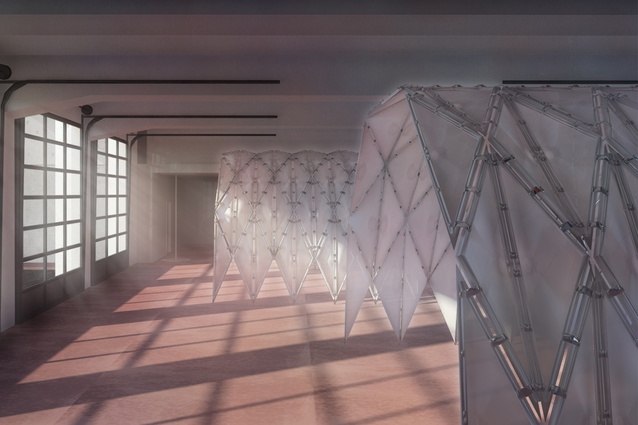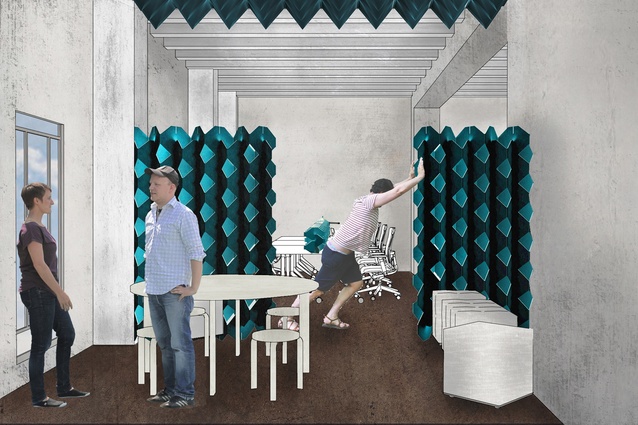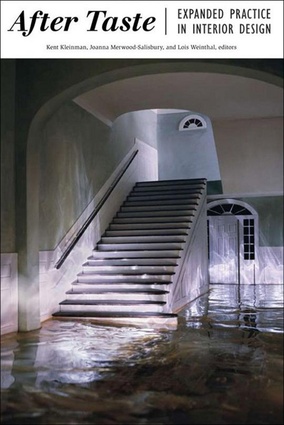After taste
Joanna Merwood-Salisbury is Head of the School of Architecture at Victoria University and a judge of the Interior Awards 2016. Federico Monsalve spoke to the academic about her work and life.
Federico Monsalve: Tell us a bit about your background. How did you get started in design?
Joanna Merwood-Salisbury: My grandfather was a contractor and my dad worked in the concrete industry, so I was in building sites throughout my childhood. I always wanted to be an architect when I was little, and I followed that by studying at Victoria, but I had the misfortune to graduate in 1992 just as that recession hit. There were very few jobs around so I thought, ‘I’ll go overseas and do some graduate study and then I’ll come back and be an architect’.
Then I got sucked into the world of academia and I loved that too, and never left. I did my graduate degree at McGill in Montreal and then my PhD at Princeton, so I’ve been following the path of an architectural historian and critic instead of practising architecture. But I remain deeply interested in contemporary practice, talking to the people who are doing exciting, innovative stuff today as well as in history.
FM: What path has your academic work taken, has it always been interiors based?
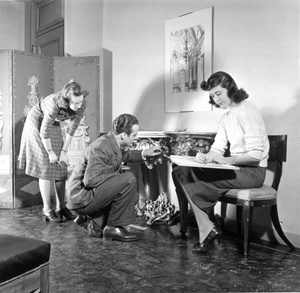
JMS: One thread that runs through most of my work is an interest in modernity. I’ve always been fascinated by 19th century architecture, the time when architects started to use new materials such as metal and glass in exciting ways. They designed buildings for new purposes: office buildings, railway stations, public museums. I did my dissertation on the early Chicago skyscrapers, trying to understand how that new building type fitted into the city, creating an incredibly new urban landscape that nobody had ever seen or experienced before, and how architects responded programmatically and aesthetically to this shocking new way of existing or operating.
When I started teaching at Parsons [School of Design], I took a side-track into interior design, which I feel I’m still on. When I came to Parsons in 2003, they were just thinking about starting a Master of Fine Arts in Interior Design, so there was a lot of workshopping going on. They were basically trying to recapture the reputation that Parsons had in interior design early in the twentieth century.
There was a big moment in the mid-60s through to mid-70s where academics and practitioners tried to say, ‘there’s no such thing as product design, interior design, architecture or urban design, it’s all one big thing we’re going to call environmental design’. It was a bold experiment to think about the environment holistically, but practically speaking, it killed off interior design as a respected way of doing things.
Interior design didn’t have a home in environmental design, because it had this reputation of being associated with exclusively wealthy clients. But interior design is a very specialist practice to do with materials and body space: it still has value as a specialized field.
So we said: ‘what if interior design is again ground-breaking, innovative, leading the other professions, the way it had been in the 1890–1920s?’. That meant reassessing categories like taste and fashion. With a series of collaborators – Kent Kleinman, Lois Weinthal and Jonsara Ruth – we convened a series of symposia, which were titled Aftertaste. We drew collaborators from a wide profile of backgrounds and we asked, ‘if you’re designing at this interior scale, what are the key themes you have to consider in the early 21st century?’.
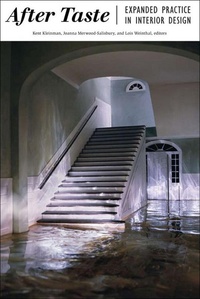
One of the big themes was obviously sustainability. We had a lot of conversations about how to train interior designers to think about using materials in a sustainable way, but we also had a lot of conversations about what taste means now, which blended into a larger discussion about branding.
In the case of commercial clients, one of the key roles of the interior designer is to express the client’s brand, and we had a lot of exhibition designers come to discuss the ways in which interior designers can create narratives and tell stories that are either very personal when it’s a private client or much more public when it’s a commercial or public client.
Out of that series of symposia we created a new curriculum which is a two year MFA degree, and also the book Aftertaste, which is a small snapshot of all of those conversations that were going on at that time.
FM: What were the key drivers of this curricula? What were the new things Parsons was doing that hadn’t been done before?
JMS: We wanted the programme to be open to students from a variety of backgrounds, to anyone who was excited to rethink the discipline. We placed a premium on experimentation and innovation, so we didn’t have a lot of prescription in the studios, and we attracted a lot of students from the fine arts. As each cohort came through, they learned a lot from those ahead of them and broadened their own ideas. We had one guy who was a musician and his thesis was about interior acoustics, which was exciting but challenging, because he had to represent his project to juries and it was about sound. It was exciting for the whole cohort to ask, ‘if I’m designing with sound, how do I represent that to others?’
Interestingly, through the years, a few themes emerged organically. One was challenging traditional workspace design. Students were critical of the open-plan model and also of newer models that companies like Google have experimented with. Now the 20th century office building is almost obsolete, and we’re working in entirely different ways across a range of different entities, so how do you design a space of work?
Another theme was food. Students became very excited to encourage people to grow food collectively, exchange food and produce, cook and eat together. They explored that in interesting ways, because when you’re dealing with food, you’re dealing with a body in a very intimate way.
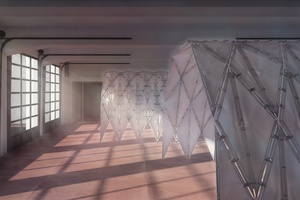
Some of the students were very interested in critiquing greenwashing, because in all of the magazines and online stories they were reading, there was this reoccurring rhetoric of sustainability, but they could see that in a lot of cases it was being used as a type of promotional tool rather than being realistically sustainable in approach. So we had people questioning that and figuring out if you’re really serious about recycling or upcycling, is it possible to design using entirely recycled materials?
FM: It seems like a big jump from exploring skyscrapers in Chicago to interiors of a totally different scale. Why that jump, and is there a connection?
JMS: I’d always seen these things as two separate threads, but only recently I’ve started to realise they are basically the same thing on a different scale. The skyscraper is this new building type responding to the forces of industrialisation, and the creation of a global market economy, and in the process creating the need for a new kind of space that’s called an office.
My students are now addressing the end of the lifecycle of the skyscraper, the office building. What happens to the space when you don’t need that configuration anymore? What does that mean for the city itself? What kinds of new buildings are you going to create? So it’s an interior and an architectural challenge, an urban and a landscape challenge as well.
FM: Are there any answers coming out of this work? Is activity based working going to be the way of the future?
JMS: In the traditional office, you could judge how long people were working because when they left their desk they were disconnected from the office. Now people are working off-site on their phone all day, every day, so there is the danger that will be the expectation of continuous work, that workers will be constantly plugged in, that won’t be adequately compensated, or they might be working in unsafe conditions. At the same time there’s so many opportunities to rethink the places of work.
FM: What have you seen happening in terms of hospitality and hotels?
JMS: Everything I say is through the eyes of my students, and when they do hospitality work they’re always trying to grasp some sense of authenticity. They don’t like an environment that seems manufactured. During the time I was living in New York, there was this huge explosion of development in Williamsburg [Brooklyn]. A rather rundown district became a hothouse of cafes, restaurants, bars, hotels, and apartments. In the design of each of those places there was this desire that it be ‘real,’ meaning related to the history of that area and to the way young people really live, rather than a corporate expression of what fashionable people might aspire to. Back in New Zealand I see that desire for authenticity replicated. Cuba Street [Wellington], where my office is located, is a prime example.
FM: How does your previous research influence the curriculum at Victoria? Or are you trying to understand how the place behaves before you start making changes?
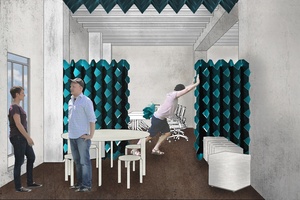
JMS: This is my first year and I have been spending it assessing where everybody is at. The good news is we have a healthy and robust Interior Architecture programme that’s producing students doing high quality work. Victoria has a long tradition of being strong in building science, and there’s a great opportunity to bring those programmes together.
Building Science has this huge pool of resources about building performance. I think interior designers haven’t quite twigged that that information could be really useful and exciting, not just in terms of improving building performance, indoor air quality, reducing electricity consumption, but by being creative with it. Some of my colleagues at Parsons have started something called the Healthy Materials Lab, taking information about materials and how they impact health and wellbeing, and factoring that into the design process.
I think here in New Zealand we probably don’t spend as much time on the large commercial type projects as they do in the American schools, just because the scale is smaller. But I think there’s nothing to stop Victoria interior students being real specialists in workplace design. There’s lots of exciting experiments taking place at the moment, such as co-working spaces, that they could jump into, learn from and even lead out.
FM: According to Aftertaste, there was a period of time when interior designers were expected to reproduce a certain kind of class standard or project a level of sophistication. Is that what branding is doing now? Is that now the role of the interior designer?
JMS: We’re in the age where branding is not only about Nike and Coca Cola and Xerox; it’s about people creating personal brands. People have their Instagram accounts, in which they curate a digital persona for themselves, and it’s the same thing with any kind of environment that’s created. People want to have a personal expression of their own brand, and that’s really the same as the classical expression of one’s social status through good design, good taste.


